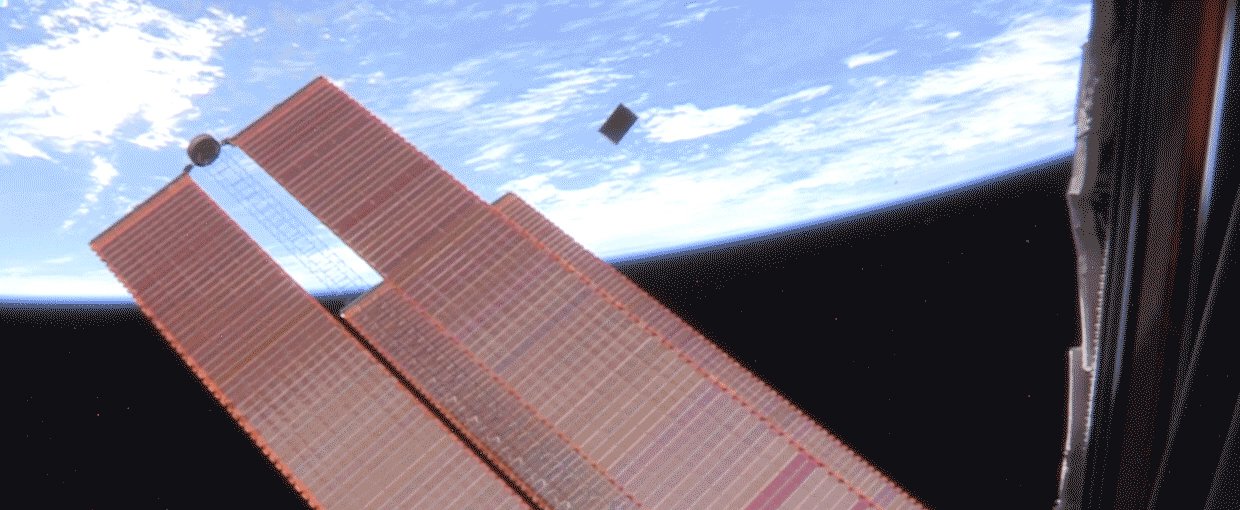
The image above, courtesy of NASA’s Jet Propulsion Laboratory, shows the CubeSat ASTERIA as it was being launched from the International Space Station in 2017.
The size of a briefcase, ASTERIA is part of a growing armada of tiny spacecraft being launched around the world and adding an increasingly important (and inexpensive) set of new tools for conducting Earth, space and exoplanet science.
ASTERIA, for instance, was designed to perform some of the complex tasks much larger space observatories use to study distant exoplanets outside our solar system. And a new paper soon to be published in the Astronomical Journal describes how ASTERIA (short for Arcsecond Space Telescope Enabling Research in Astrophysics) didn’t just demonstrate it could perform those tasks but went above and beyond, detecting the known exoplanet 55 Cancri e.
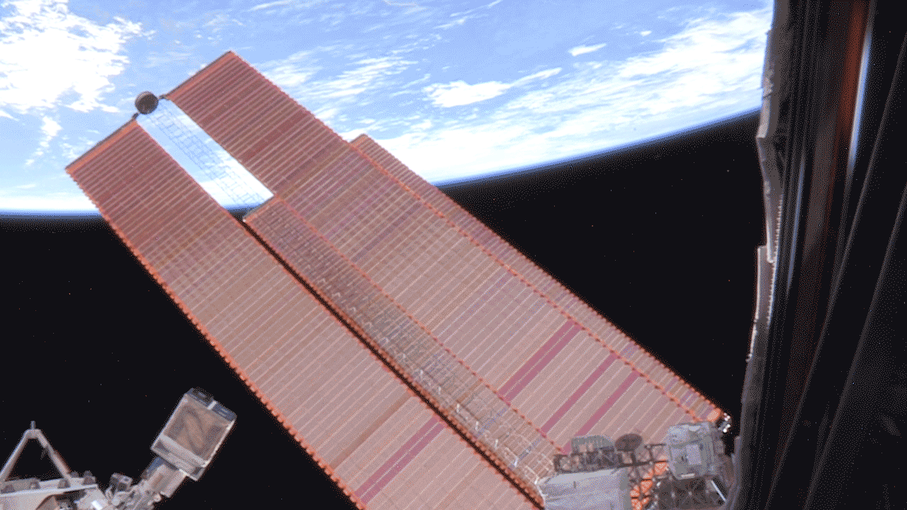
ASTERIA was deployed from the International Space Station on November 20, 2017.Image credit: NASA/JPL-Caltech.
While it was not the first detection of that exoplanet — which orbits close to its host star 41 light years away — it was the first time that a CubeSat had measured the presence of an exoplanet, something done so far only by much more sophisticated space and ground telescopes.
“Detecting this exoplanet is exciting because it shows how these new technologies come together in a real application,” said Vanessa Bailey, who led the ASTERIA exoplanet science team at JPL. The project was a collaboration between JPL and the Massachusetts Institute of Technology.
“We went after a hard target with a small telescope that was not even optimized to make science detections – and we got it, even if just barely,” said Mary Knapp, the ASTERIA project scientist at MIT’s Haystack Observatory and lead author of the study. “I think this paper validates the concept that motivated the ASTERIA mission: that small spacecraft can contribute something to astrophysics and astronomy.” Both made their comments in a JPL release.

Artist rendering of planet Cancri 55 e.Image credit: NASA/JPL-Caltech.
ASTERIA was originally designed to spend 90 days in space. But it received three mission extensions before the team lost contact with the satellite in late 2019.
The mission was not even designed to look for exoplanets. It was, rather, a technology demonstration, with the mission’s goal to develop new capabilities for future missions. The team’s technological leap was to build a small spacecraft that could conduct fine pointing control — essentially the ability to stay focused very steadily on a distant star for long periods.
The CubeSat used fine pointing control to detect 55 Cancri e via the transit method, whereby scientists look for dips in the brightness of a star caused by a passing planet.
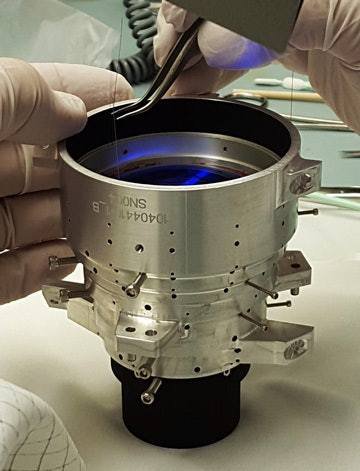
The ASTERIA’s telescope optics being installed and aligned.Image credit: NASA.
When making exoplanet detections this way, a spacecraft’s own movements or vibrations can produce jiggles in the data that could be misinterpreted as changes in the star’s brightness. So the spacecraft needs to stay steady and keep the star centered in its field of view. This allows scientists to accurately measure the star’s brightness and identify the tiny changes that indicate the planet has passed in front of it, blocking some of its light.
In an email, ASTERIA principal investigator Sara Seager of MIT, said that the precision pointing achieved was 10 times greater than anything attained before by a satellite of its small size.
ASTERIA’s planet detection was of a super-hot exoplanet twice the diameter of Earth that was first found by another small — but not this small — satellite flown by the Canadian Space Agency, which made the transit detection of 55 Cancri e in 2011. Called MOST (Microvariability and Oscillations of Stars,) it was about six times the volume of ASTERIA, which still very small for an astrophysics satellite.
Equipped with a 5.9-inch (15-centimeter) telescope, MOST was also capable of collecting six times as much light as ASTERIA, which carried 2.4-inch (6-centimeter) telescope. Because 55 Cancri e blocks out only 0.04% of its host star’s light, it was an especially challenging target for ASTERIA.
The CubeSat made what’s known as a marginal detection, meaning the data from the transit would not, on its own, have convinced scientists that the planet existed. Faint signals that look similar to a planet transit can be caused by other phenomena, so scientists have a high standard for declaring a planet detection.
But by comparing the CubeSat’s data with previous observations of the planet, the team confirmed that they were indeed seeing 55 Cancri e.
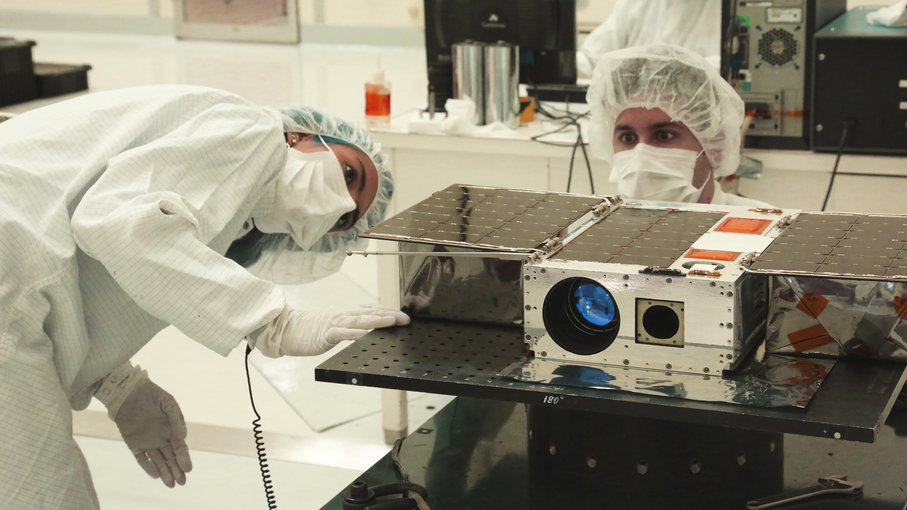
Electrical Test Engineer Esha Murty (left) and Integration and Test Lead Cody Colley prepare the ASTERIA spacecraft for mass-properties measurements in April 2017 prior to spacecraft delivery ahead of launch. ASTERIA was deployed from the International Space Station in November 2017.Image credit: NASA/JPL-Caltech.
CubeSats such as ASTERIA — the name of a pre-Olympian Greek goddess of falling stars and of nighttime divinations — are a fast-growing presence in the skies.
They are miniaturized satellites made up of multiples of units that each measure 10 cm (about 4 inches) × 10 cm × 10 cm. CubeSats have a mass of no more than 1.33 kilograms (2.9 lb) per unit, and often use commercial off-the-shelf (and consequently relatively inexpensive) components for their electronics and structure.
CubeSats are commonly put in orbit by “deployers” on the International Space Station, or launched as secondary payloads on a rocket. More than 1200 CubeSats have been launched as of January 2020. More than 1100 have been successfully deployed in orbit and more than 80 have been destroyed in launch failures.
Many are the property of private commercial ventures — used by businesses to achieve their goals in global imaging, communications and more, and by schools as part of their teaching. Industry examples include Planet, which is working to develop a constellation of over 100 CubeSats) to gather global imagery data daily, and Astro Digital, which seeks to implement a constellation of multispectral imaging satellites to image the entire Earth every three to four days.
JPL has its own set of CubSat initiatives for non-profits, schools and universities and crowd-sources projects — including a program that helps to connect CubeSat teams with future rocket launches on which they could piggyback.
In its section on CubeSats, this is what the JPL website had to say:
“Small, modular, and inexpensive to build and launch, CubeSats are opening up space exploration like never before. They offer a new world of possibilities in research and technology development to everyone: students, universities of all sizes, technology pioneers, and crowd-sourced initiatives.”
“With CubeSats, there’s strength in numbers. Entire constellations of CubeSats, flying in formation and working together, could make powerful observations analyzing everything from the nature of Europa’s icy shell to the extremely low-frequency energy of far-away galactic nuclei and black holes.”
“For more complex missions, swarms of CubeSats could be anchored by a single ‘hu‘” — a powerful central spacecraft that can handle complex computational tasks and data transmission back to Earth. Keeping each CubeSat simple and focused will allow for more inexpensive deployment, greater reliability, and the incremental ability to add new CubeSats or replace malfunctioning units.”
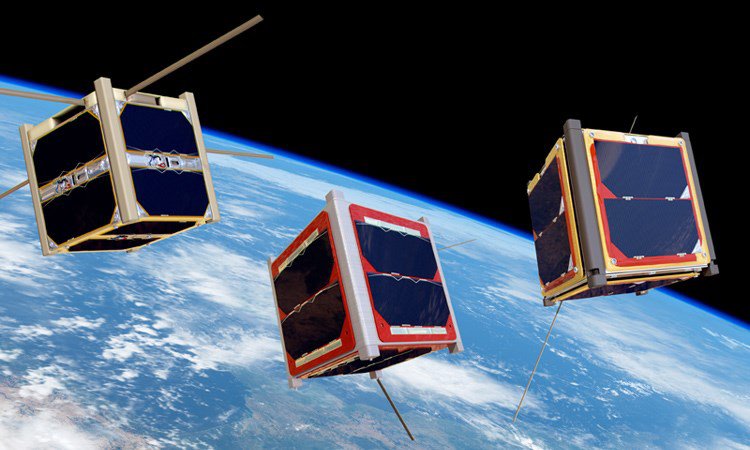
CubeSats against the background of Earth. Many have been deployed for Earth imaging and climate science, but also increasingly for astrophysical exploration of space.Image credit: NASA.
CubeSat constellations have already been deployed by NASA and private companies, and exoplanet pioneer Seager recently won a grant from NASA’s Astrophysics Science SmallSat Studies program to plan for deployment of a small fleet of exoplanet-hunting CubeSats.
Seager and her team plan to search for Earth-size planets in Earth-like orbits, transiting the brightest sun- like stars. Because the brightest sun-like stars are spread all across the sky, a single telescope will not do, they say. With the proposed constellation-based approach, each satellite would monitor a single sun-like star for as long as possible, before switching to another star.
In her winning proposal Seager wrote that “despite several different mature exoplanet finding techniques and a number of past, present, and future transiting exoplanet missions, the proposed constellation is unique in its ability to find transiting Earth analogs across the entire sky. Exoplanet transits provide the opportunity to conduct follow-on spectroscopic measurements of exoplanetary atmospheres, including the search for biosignature gases.
Seager envisions developing the constellation in three stages: Phase I, now complete, is the technology demonstration for precision pointing and thermal control via the ASTERIA technology demonstration pathfinder. Phase II — the recently won grant — would produce a small constellation of a half dozen 12 CubeSats to focus on the brightest sun-like stars. Phase III would be the growth of the constellation with up to several dozen satellites to examine all target stars.
As CubeSat astronomy progresses, it has great science and Earth monitoring potentials and one very large advantage: cost. Despite having many twists and turns in its research and development, Seager estimates the total cost of the ASTERIA project as between $5 million and $10 million, a small fraction of the cost of other astronomy instruments.
The Many Worlds Blog chronicles the search for evidence of life beyond Earth written by author/journalist Marc Kaufman. The “Many Worlds” column is supported by the Lunar Planetary Institute/USRA and informed by NASA’s NExSS initiative, a research coordination network supported by the NASA Astrobiology Program. Any opinions expressed are the author’s alone.
